Air Force Wargamers Fight in the Blood Red Skies
It wasn’t an average Friday for the folks who run wargames at the Pentagon for the US Air Force, Instead of starting off their weekends, a few of these professional wargamers stuck around to play a game of in order to become familiar with the hobby side of wargaming.
Some of you may recall from my podcast welcoming Phil and Nate to the NDNG team that my day job is to conduct wargames for the US Air Force. While many may believe the two worlds are similar I would point out, despite a few similarities, they are vastly different.
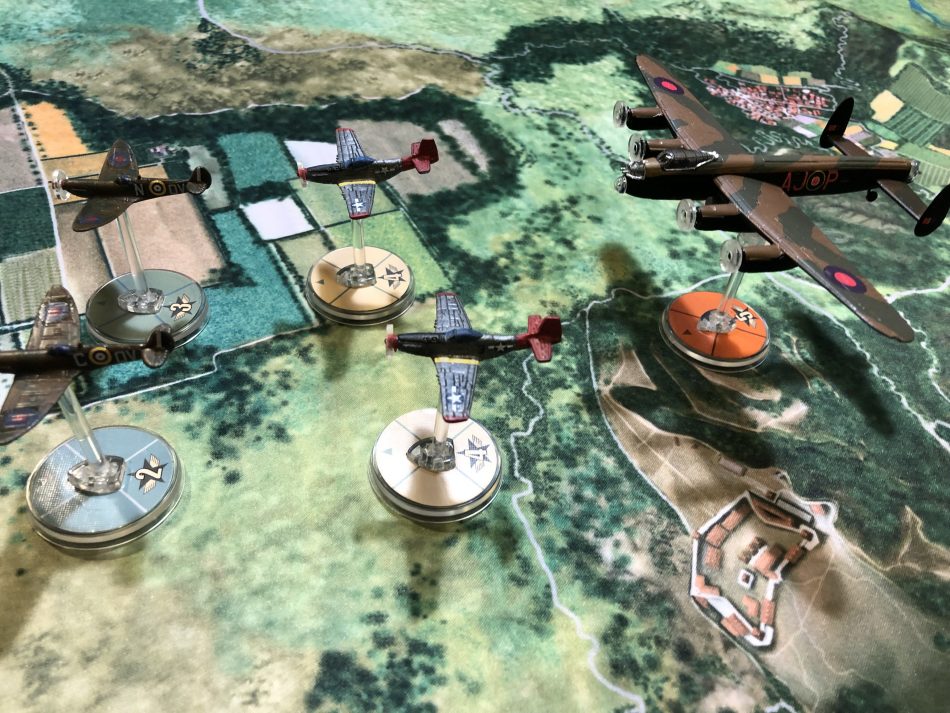
I used Blood Red Skies to show the people I worked with a few things about our hobby and about the mechanics and the structure of games that both the military and the hobby communities share.
Since all the people in my office are mostly retired Air Force, I felt they would enjoy the subject matter the game covers.
Both professional and hobby games require objectives, accurate capabilities to measure, and a means to determine success. Whether it’s a dogfight over Europe or a major conflict twenty years in the future, all games share some of the same mechanics and characteristics. I felt that these similarities are better to explain and illustrate by playing a commercial wargame.
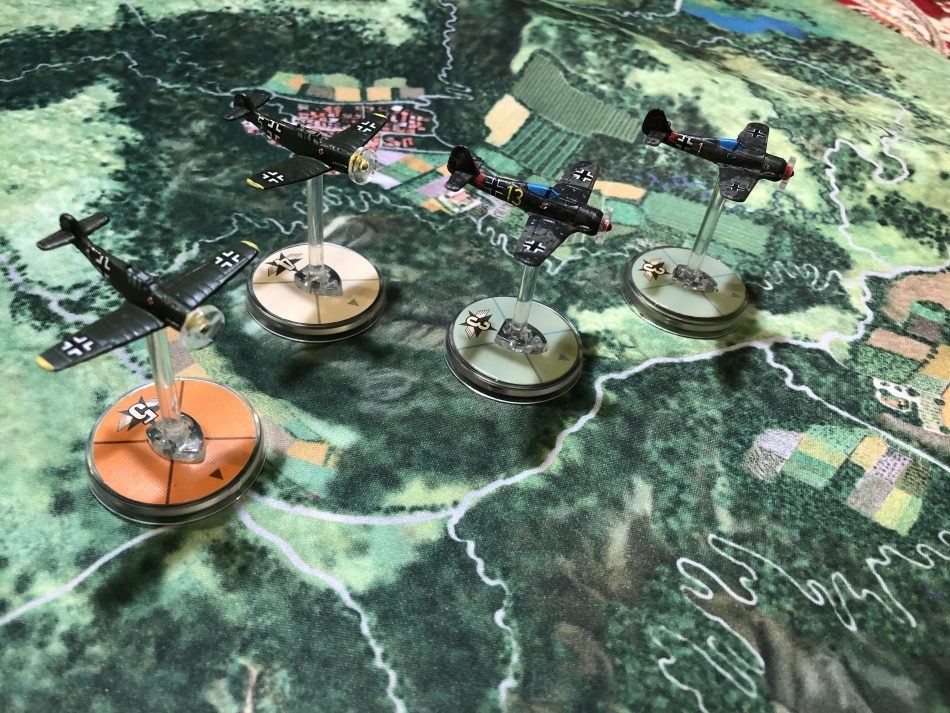
Back to the Game
The mission was simple, escort the bomber to the target, with ME-109 and FW-190 aircraft roaming the skies in a defensive role. The US Mustangs and RAF Spitfires quickly headed for the German threat, yet the dogged determination of the Luftwaffe stayed on mission and downed the bomber in short order.
“I learned a lot of about wargame mechanics and what games the hobby gamers play” said Jeff Runnels, a USAF civilian, and a retired intelligence officer.
John Harris, a retired Air Force pilot, stated “this was great to see how mechanics effect gameplay and how knowing a bit about air combat is important in the game.” Overall all of the participants liked the game and want to play it again.
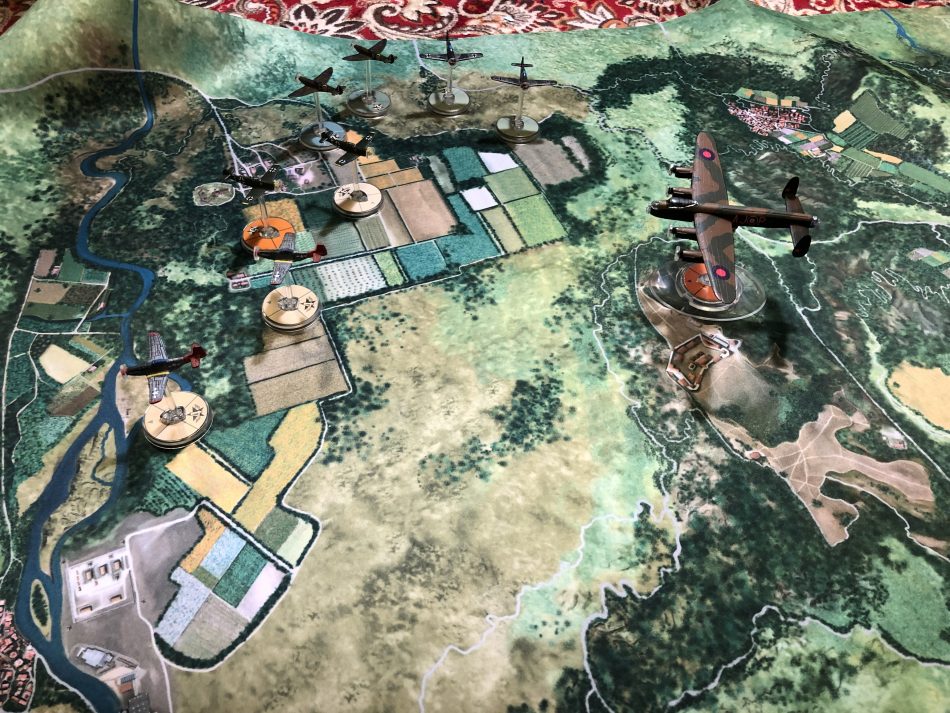
There were interesting insights that the group came up with during gameplay. They all realized that the better they understood the rules of the game, the better they could have used the mechanics to affect the outcome.
This is an important point, many hobbyist gamers feel the lists/forces/etc has the greatest impact on the game, where many great players will tell you is that you need to know the rules and how to apply them to be successful.
The professionals also recognized how much you can learn for a game.
In contrast, many hobby gamers, after a loss, may be quick to say that their list failed them or the dice gods were not on their side. They do not look at the loss as a teaching event that could improve the employment of their forces in future games.
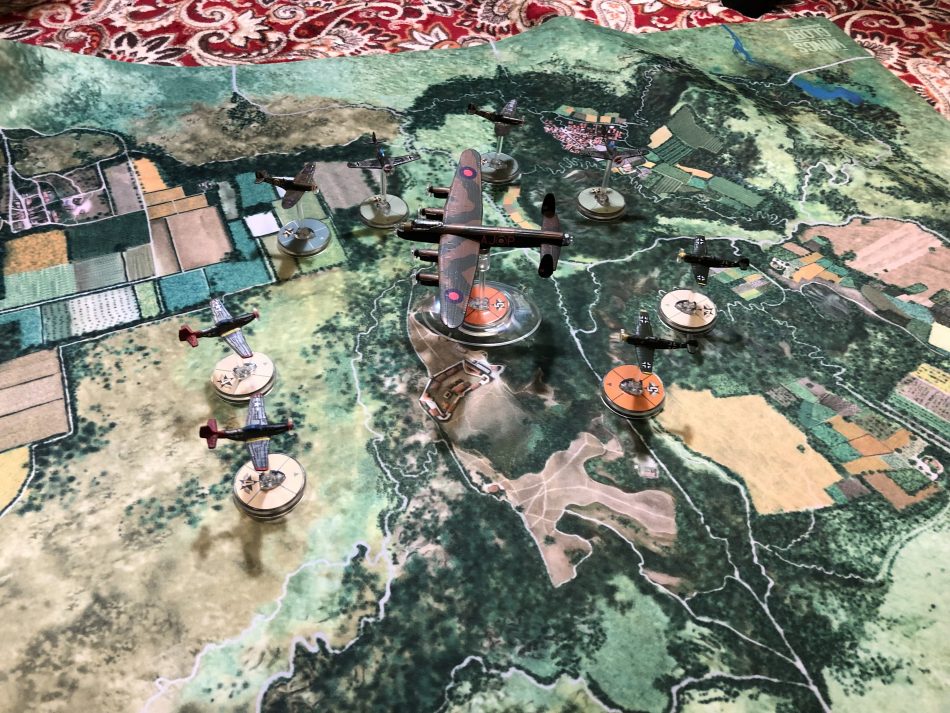
Amongst our players that day, only one of the group – other than myself – was a wargame hobbyist. So the group was mostly unaware of how air-combat games in the hobby space, such as BRS were played.
The fact that they all felt that the game portrayed the subject matter well and was mechanically sound should be something that folks who have knocked the game for being too simple should take note of.
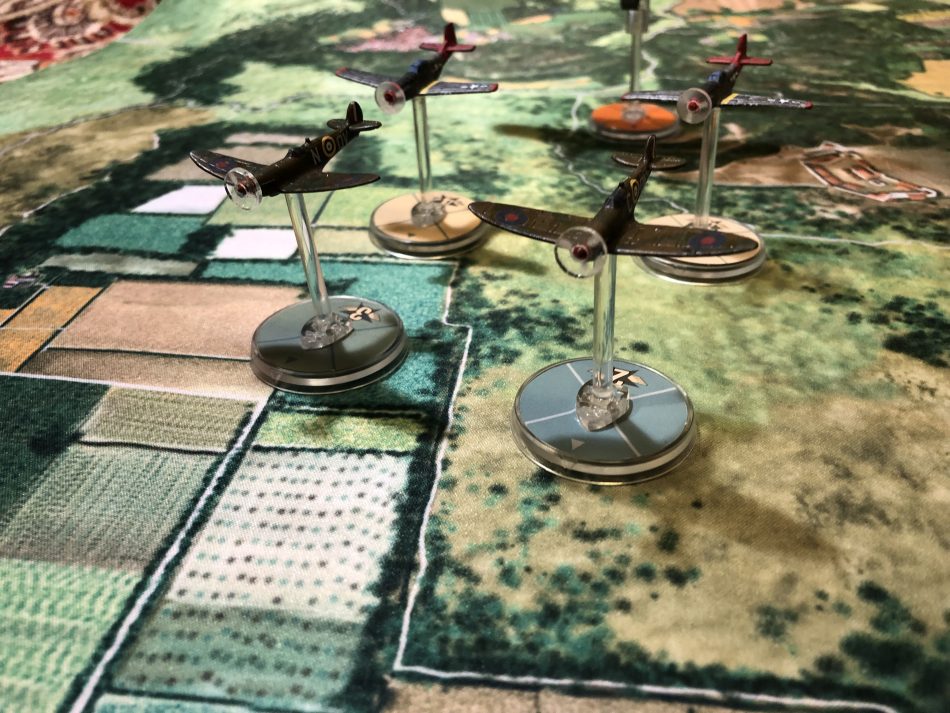
I have heard many times about a game being “realistic” and the truth is that in miniature gaming I have not seen any game that comes close to reality.
Whether it is Team Yankee at 6mm vice 15mm or BRS vice Check Your 6, no game on the market today can qualify as a simulation where we can factually state one force/concept/tactic is better than another one.
The only realism games cover is that humans make many mistakes. I guess it’s good we play these things for fun.
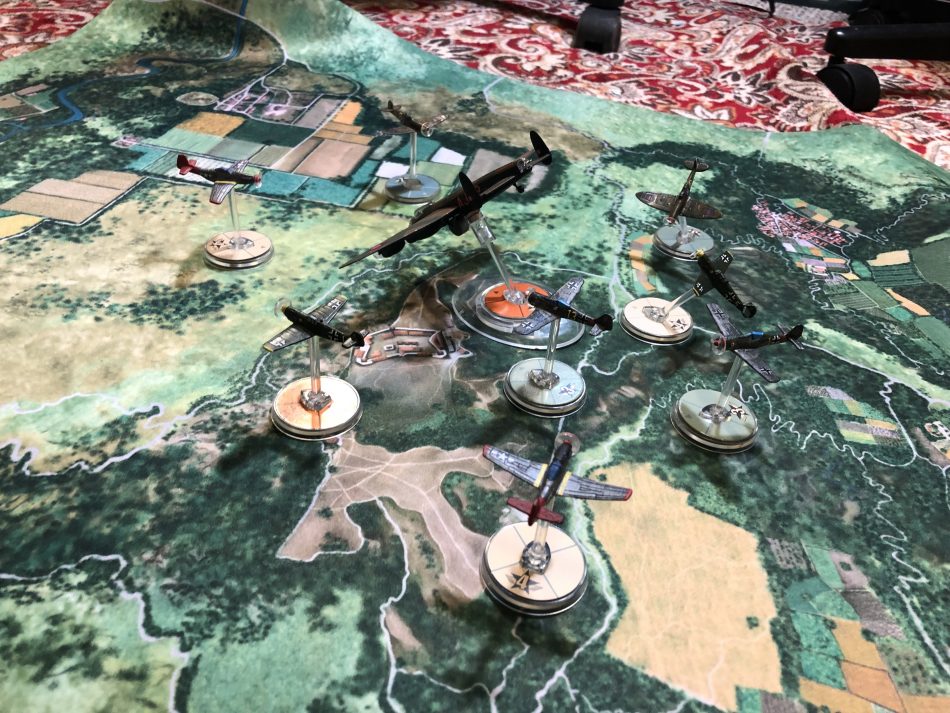
With the success of this event, it seems like the wargamers at the Pentagon may once again take to the Blood Red Skies. I may introduce them to other games, however. I would love to hear what games you recommend.
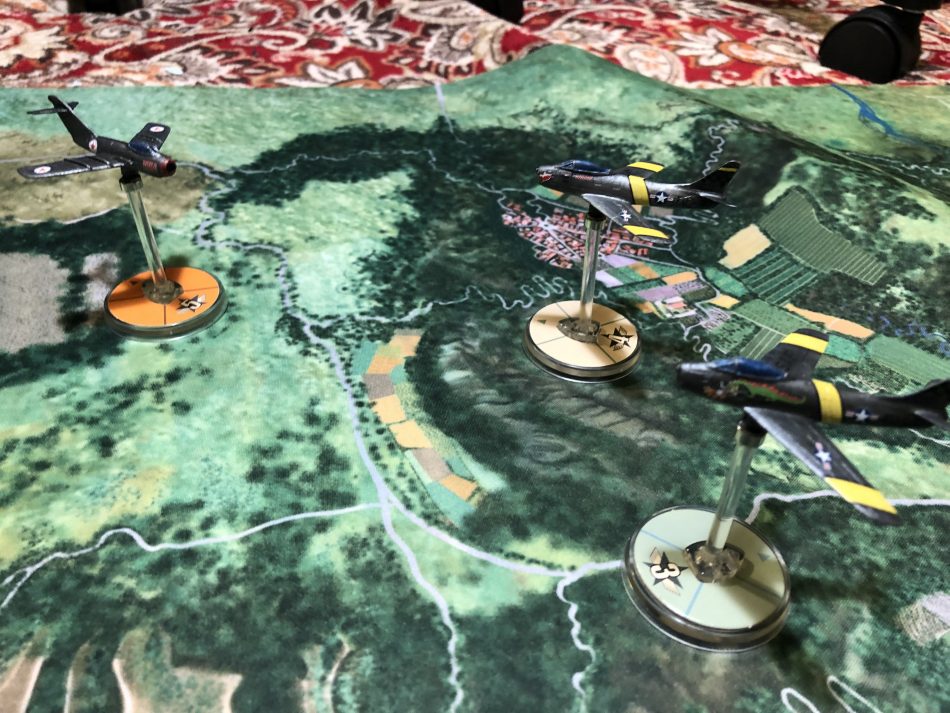
The Future
We all know that BRS will expand later this year with MiG Alley which will feature jet fighter combat. I wanted to get ready for this so I picked up some MiG-15 and F-86 models from and Decals from .
Both the planes and decals are amazing and I was able to have the entire livery match the serial numbers of the Sabres. AIM also sells magnets that fit on the top of your BRS stands so they can use AIM aircraft. These work great, although the model goes off center when you move. Just tap it back into alignment.

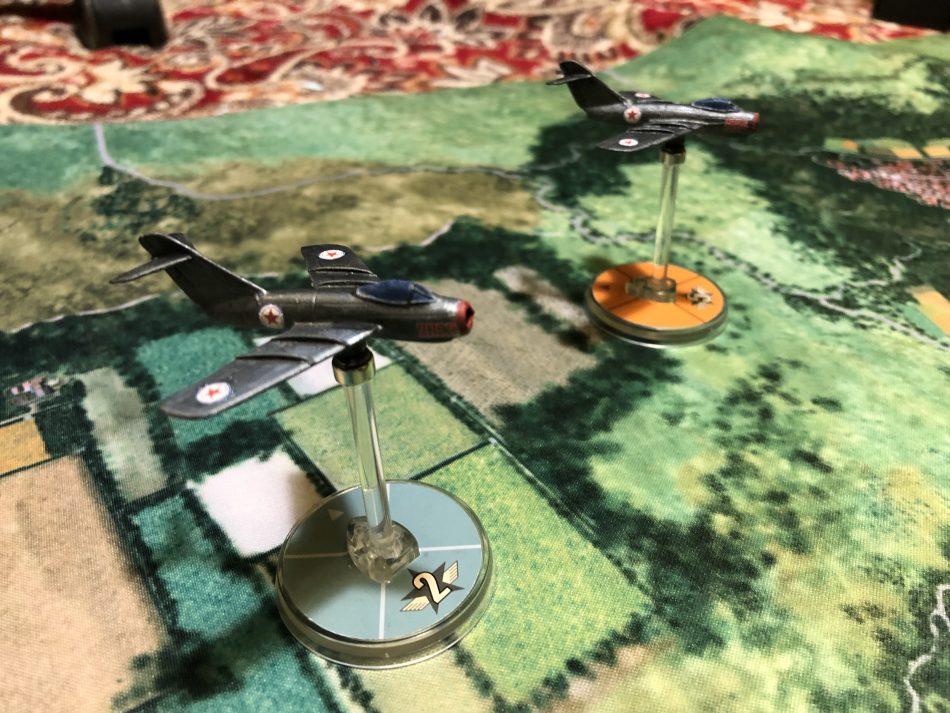


Great stuff! Thanx for the article and look forward to more sortie reports.
Great article! As a retired USMC F/A-18 WSO, I think it is an important distinction between wargaming to validate tactics versus building a wargame to give gamers a “flavor” of the event or to force them to make similar decisions/tradeoffs that the actual event would require. I think BRS excels in the latter as it does generalize a lot of the detail of aerial combat, it does make you consider turn radius, turn rate, and an “energy state” AKA “advantage”. If you ever played “Air War” by SPI, you will remember a horrendous amount of record keeping and table lookups just to play a 2v2 engagement! Thanks for exposing your counterparts to BRS, maybe we’ll convert a few of them to miniatures wargamers after all!